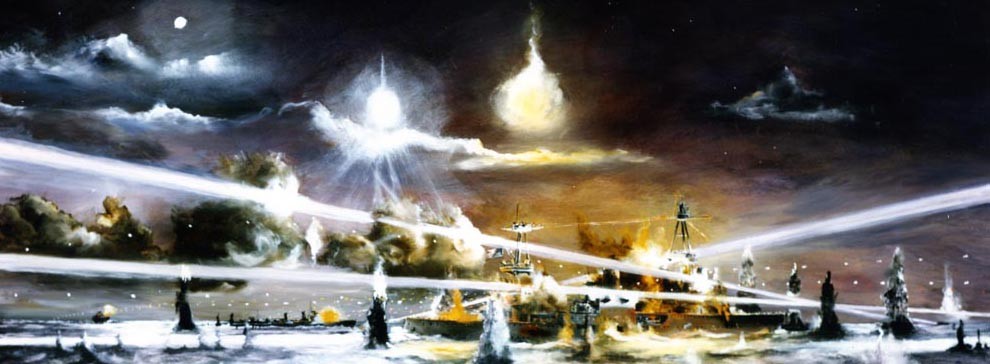
Creation of the ABDA to Combat the Japanese Octopus
1942: January 15: Creation of the ABDA to Combat the Japanese Octopus
Activated on January 15, 1942, the American-British-Dutch-Australian (ABDA) Command was ordered to combat the Japanese expansion in South-East Asia. The Supreme Commander was Field Marshall Sir Archibald Wavell. For the naval forces, Admiral Thomas C. Hart, USN, was initially in command. On February 12, Hart departed the command and was replaced by Dutch Admiral Conrad Helfrich, RNN. ABDA naval forces engaged the Japanese in January during the Battle of Balikpapan, which was the first surface action in the Pacific War for the U.S. Navy since the Spanish-American War in 1898. As the Japanese spread in the region to gather oil and rubber resources in the south-east island area during February, the ABDA slowly lost naval forces, though they bravely fought at the battles at Makassar Strait, Badung Strait, Java Sea, and Sunda Strait. Other U.S. Navy ships lost that month were USS Langley (AV-3), submarines at Surabaya, and during the Japanese bombing at Darwin, Australia. Though deemed a failure, the ABDA command meet an enemy that used initiative but itself had a limited source of naval vessels and supplies, along with the added stress of communication issues. ABDA boldly fought against the Malay Barrier and delayed the conquest of the region. Despite the losses, the U.S. Navy regained composure in the following months after to dissolution of the ABDA Command and was able to "Turn the Tide" of the Japanese.
Image: Battle of Sunda Strait, February 28-March 1, 1942. Artwork by John Hamilton, depicting USS Houston (CA-30) in her finaction against Japanese forces. Courtesy of the Navy Art Gallery, Naval History and Heritage Command.



